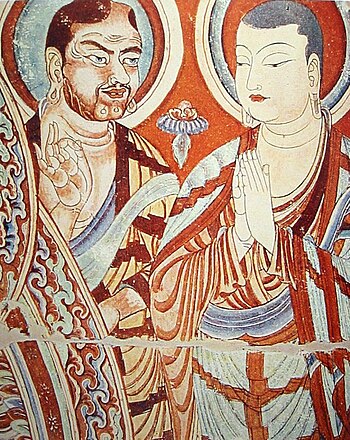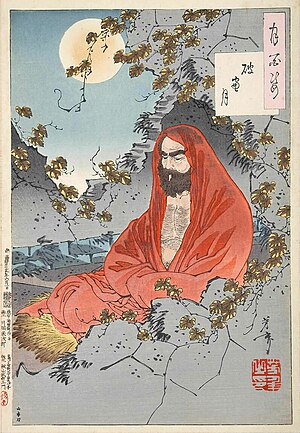| Ch'an | |
|---|---|
| Pali Name | |
| Romanization | Jhāna |
| Devanāgarī | झान |
| Sinhala | ඣාන |
| Sanskrit Name | |
| Romanization | Dhyāna |
| Devanāgarī | ध्यान |
| Chinese Name | |
| Hanyu Pinyin | Chán |
| Wade-Giles | Ch'an |
| Shanghainese | Zeu [zø] |
| Cantonese IPA | sɪm4 |
| Cantonese Jyutping | sim |
| Hanzi | 禪 |
| Jiantizi | 禅 |
| Korean Name | |
| Revised Romanization | Seon |
| McCune-Reischauer | Sŏn |
| Hangul | 선 |
| Hanja | 禪 |
| Japanese Name | |
| Romaji | Zen |
| Hiragana | ぜん |
| Kanji | 禅 |
| Vietnamese Name | |
| Quốc ngữ | Thiền (Thiền na) |
| Chữ Hán | 禅那 |
| Tibetan Name | |
| Wylie | bsam gtan (pronounced samten) |

This is the user page for the Wikipedian whose name Ch'an is taken from the Chinese language name of a particular transmission passed down through an unbroken lineage for 2500 years from Siddhartha Gautama (Pali: Siddhattha Gotama) Buddha, historical founder of Buddhism.
The word "ch'an" originated 1500 years ago as a Chinese pronunciation of the Sanskrit word "dhyāna", itself derived from the earlier Pali word "jhāna", and later became the source for the Japanese word "zen", the Korean word "seon", and the Vietnamese word "thiền", all of which words refer to a state of meditative concentration or absorption.
The Ch'an tradition is said to have been brought from India to China between the years 420 and 527 by Bodhidharma, founder and First Patriarch of Ch'an [and Zen] Buddhism. The three depictions of Bodhidharma on this page are from the Wikimedia Commons.
More about Ch'an from Wikipedia as of 2006-09-27:
"Ch'an is [the Wade-Giles transliteration of] the Chinese name for the school of Mahāyāna Buddhism which is the origin of Japanese Zen.
Ch'an is known for its emphasis on meditation and everyday life ahead of philosophical and scriptural pursuits. ...
Bodhidharma is recorded as having come to China to teach a special transmission outside scriptures which did not rely upon words."
Here is your moment of zen ...

